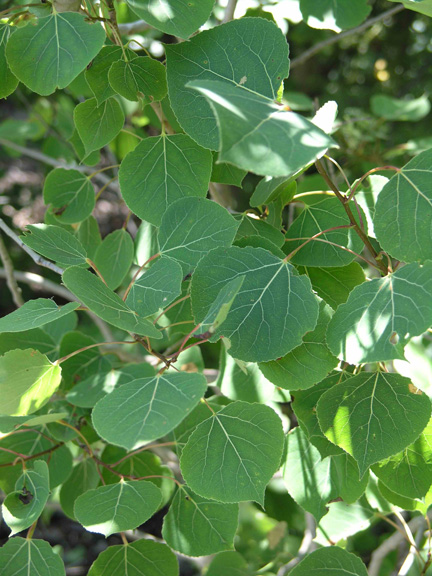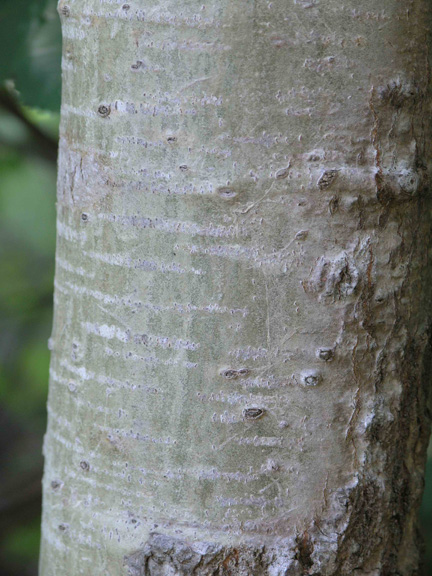| General Description | The Quaking or Trembling aspen is a North American native tree that boasts the largest native range of any tree. Reproducing through a combination of runners and seeds it is very fast growing and prefers moist soil, and full sun.
|
| ID Characteristic | The Trembling Aspen is easily identified by the sound it makes and the scars left by fallen lower limbs, which this aspen is prone to losing. The petiole of the trembling aspen is almost completely flat, and the leaf stalk is longer than the leaf itself, so even the slightest breeze makes this tree appear to be trembling, giving it its name. This along with the white/grey colouration of the bark and typical poplar leaves make it easy to pick out.
|
| Shape | Lower limbs almost always die back leaving a V-shaped scar and the tree matures to a straight trunk. |
| Landscape | Generally used in natural landscaping. Leaves 'tremble' in the wind hence the common name. |
| Propagation | Reproduces mainly through runners. The easiest way to propagate the plant is by taking root cuttings. Seed easily germinates.
|
| Cultivation | Best grown on well drained to moist soil that is rich in calcium, however it is quite adaptable.
|
| Pests | Aspen serpentine leafminer, poplar borer, western tent caterpillar, roundheaded and flatheaded woodborer, leafminer beetle. Elk tooth marks and bear claw marks may be present in natural environments.
|
| Notable Specimens | In Utah, an individual called Pando has covered 81 hectares and is estimated to be the heaviest known organism on the planet at 6600 tons. |
| Bark/Stem Description | Varies from warty, smooth, white, grey, green or all of the above and with age the lower bark becomes grey and broadly cracked.
|
| Flower/Leaf Bud Description | Conical, reddish-brown; terminal bud .5 cm long, often resinous. Stem buds are commonly eaten by elk or killed by severe freezing.
|
| Leaf Description | Simple, alternate, and heart shaped to nearly round, 2.5-7.6 cm long; dark green and shiny above, pale green underside with small rounded teeth at the margins.
|
| Flower Description | A dioecious species producing catkins. Bracts are brown, finger-like, and surround creamy yellow flowers with black tipped stamens. Flowers in the spring before leaves emerge.
|
| Fruit Description | Small downy capsules.
|
| Colour Description | In autumn, foliage turns gold-yellow and occasionally red in some specimens. Generally green foliage and brown lustrous bark.
|
| Texture Description | Smooth to coarse.
|

